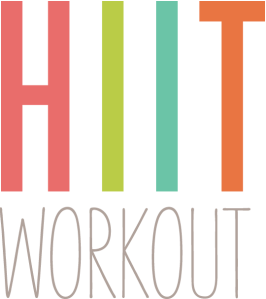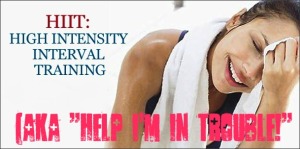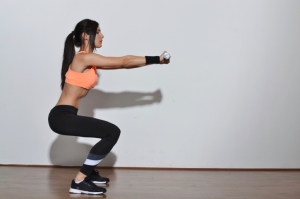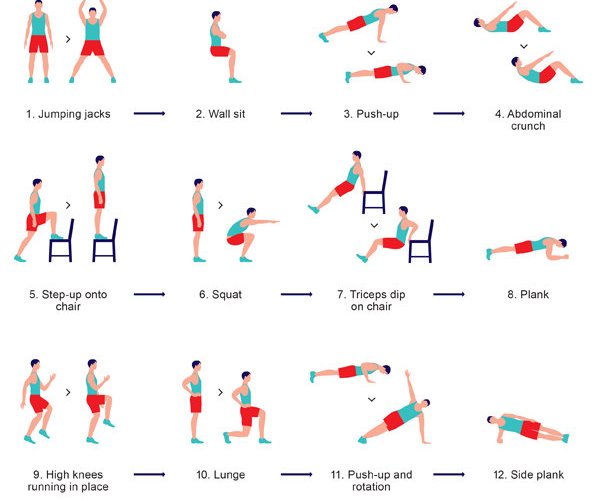Share This
Deepseek https://www.deepseek.com/./深度求索
DeepSeek | 深度求索
https://askaichat.app/chat
Showing posts with label ageLOC TR90. Show all posts
Showing posts with label ageLOC TR90. Show all posts
Friday, August 21, 2015
ageLOC You-SPAN
Labels:
AgeLoc,
ageLOC R2,
ageLOC TR90,
ageLOC YouSpan,
beauty,
Exercise,
fashion,
Fitness,
Health,
Pilates,
sports,
Vitality,
Wellbeing,
wellness,
Yoga,
YouSpan
 Rightways - Sowing the seeds of Success:
Think Global, Act Local; Change & Grow Rich; Sow as You Reap & Soar High!
Richard Tan
MBA(UK), BCA(NZ), AMA(USA),MMIM
Rightways - Sowing the seeds of Success:
Think Global, Act Local; Change & Grow Rich; Sow as You Reap & Soar High!
Richard Tan
MBA(UK), BCA(NZ), AMA(USA),MMIM
Thursday, July 30, 2015
HOW SCIENTIFIC IS THE SCIENTIFIC SEVEN MINUTE WORKOUT?
A couple of years ago the New York Times wrote about a game changing workout that would get you fit in only seven minutes. Yes, rather than endure 30-60 minutes of moderate intensity physical activity most if not all days of the week, seven minutes every now and then was suddenly enough to cure that heart disease of yours. The strange thing was that the New York Times, a relatively reliable source, had claimed that the workout was scientific.
This contradicted everything I learnt during my seven years at university. Therefore, today I ask in an outraged, yet concerned voice: is the scientific seven minute workout actually scientific?
Why it might be scientific:
Well the seven minute workout was first brought to the light in an article in a scientific, scholarly journal in 2013. For those of you who don’t know, this is basically a book full of studies and scientific articles that nerds who like exercise read – I am one of these nerds. The article did a review of the scientific studies to date on high intensity interval workouts. At the end it outlined an extremely high intensity, bodyweight exercise regime that could potentially lead to results equivalent to hours of endurance and resistance training combined, based on said studies. This is all good, well and even awesome, but there are a couple of barriers before we can call the seven minute workout truly scientific.

The first is that the studies referenced in this article utilised high intensity training of longer durations. Essentially meaning there is no evidence from this article that seven minutes is long enough for a workout.
The second is that the authors of the article advocate performing the article two to three times, suggesting even they’re not sure whether seven minutes is enough.
The third and perhaps the final, is that they did not directly test the effects of their seven minute workout and workouts that only used a bodyweight circuit. That was until now……

Is it actually scientific?
Yes, the year of 2015 brought the first, and as far as I’m aware, only study directly assessing the effects of the seven minute workout. Nervous? I am.
The study had 96 university students, for eight weeks, perform either: 1. Their normal exercise regime; 2. Seven minute circuit workouts; 3. Four weeks of seven and four weeks of 14 minute workouts.
Improved muscular endurance (number of push-ups) in both the seven and 14 minute group was observed compared to the normal exercise group. The same was true for strength, but only in male participants. Finally, aerobic fitness was also assessed, but only found to have been increased in women in the 14 minute circuit training group.

Is it healthful?
The scientific seven minute workout is slightly healthful. Well, it’s probably better than doing nothing. It will likely improve your muscular endurance and perhaps strength – depending on what sex you are; however, it may not be enough to enhance cardiorespiratory endurance. Further, there are many other variables that exercise alters, that have not been assessed.
Based on the the paper I brought up initially, high intensity workouts of longer duration appear very effective, but to date there is no proof seven minutes is enough.
I hope this has been healthful!

Isithealthful
I hold a Doctor of Physiotherapy, Bachelor of Exercise Science and am a qualified personal trainer. I have extensive clinical and research experience and a strong passion for all things health. This has driven me to write the blog: Is it healthful, in order to analyse sound scientific research to determine if a product, service or intervention is healthful, or simply a waste of money or time.
Labels:
AgeLoc,
ageLOC R2,
ageLOC TR90,
beauty,
Exercise,
fashion,
Fitness,
Health,
house,
mental,
Physical,
property,
SCIENTIFIC WORKOUT,
sexual,
sport,
stamina,
Trees,
Vitality,
wellness,
Yoga
 Rightways - Sowing the seeds of Success:
Think Global, Act Local; Change & Grow Rich; Sow as You Reap & Soar High!
Richard Tan
MBA(UK), BCA(NZ), AMA(USA),MMIM
Rightways - Sowing the seeds of Success:
Think Global, Act Local; Change & Grow Rich; Sow as You Reap & Soar High!
Richard Tan
MBA(UK), BCA(NZ), AMA(USA),MMIM
Monday, July 20, 2015
Science on why living near trees might improve your health!
Short ‘n’ healthful:
Recently I purchased a property in what can only be described as a tree lined street. Yes, I was finally living the the great Australian dream. Unfortunately not all shared my view.
In fact since this purchase, many have ridiculed me for buying close to, if not at the top of the market. Well, ridiculers it now appears the ridicule is on you. Yes, ladies and gentlemen, a new study has found that living on a block with more trees is the cat’s pyjamas for your health.

The study:
The study I refer to was conducted in the fine city of Toronto. The researchers looked at the density of trees in certain areas of the city and then had a look at health outcomes. It was found that living in a tree lined street was associated with fewer cardiometabolic diseases and perceived better health. Perceived better health is important as it is linked with later death and fewer illnesses, while not having a cardiometabolic disease is great for many obvious reasons. I should note that the study controlled for education level, income and age, meaning it was likely the tree lined street associated with the improved health rather than the aforesaid factors.

How many trees does my street need?
Interestingly, the study found the exact number of trees required to improve health. Ten trees or more in a block was found to improve overall health as much as earning $10,000 more a year would, or being a whooping seven years younger. If we look at cardiometabolic conditions specifically, having eleven trees or more in a block had a similar effect to having an extra $20,000 in annual income or being 1.5 years younger.

Why might it be good to live near trees?
Well, firstly it could just be an anomaly. Studies – ridiculous ones – have found an association between high increase consumption and a high murder rate. I can’t remember the last time I went on a murderous rage after eating some Ben and Jerry’s. Therefore, to say the results are certain, you really need to plant some trees in someone’s street and then analyse the effects on health.

Alternatively, it may be the physical result of reduced carbon dioxide or more oxygen being delivered by the tree. Or it could even be that the being around some nice looking trees then indirectly translates to improved health.
Is it healthful?
Based on some fairly weak, albeit interesting research, living near trees appears slightly healthful. To my friends who ridiculed me, look who’s laughing now – I’m officially seven years younger.
I hope this has been healthful. Your thoughts? Are you about to lobby your local council for a few extra pines.
I hope this has been healthful!

Isithealthful
I hold a Doctor of Physiotherapy, Bachelor of Exercise Science and am a qualified personal trainer. I have extensive clinical and research experience and a strong passion for all things health. This has driven me to write the blog: Is it healthful, in order to analyse sound scientific research to determine if a product, service or intervention is healthful, or simply a waste of money or time.
Labels:
AgeLoc,
ageLOC R2,
ageLOC TR90,
beauty,
Exercise,
fashion,
Fitness,
Health,
house,
mental,
Physical,
property,
sexual,
sport,
sports,
stamina,
Trees,
Vitality,
wellness,
Yoga
 Rightways - Sowing the seeds of Success:
Think Global, Act Local; Change & Grow Rich; Sow as You Reap & Soar High!
Richard Tan
MBA(UK), BCA(NZ), AMA(USA),MMIM
Rightways - Sowing the seeds of Success:
Think Global, Act Local; Change & Grow Rich; Sow as You Reap & Soar High!
Richard Tan
MBA(UK), BCA(NZ), AMA(USA),MMIM
Thursday, July 16, 2015
Happy and healthy, not hunky
Blame it on the beefcake: In this scene from Captain America: The First Avenger, Steve Rogers (played by Chris Evans) is instantaneously turned from dweeby nothing to hero hunk with a fictional serum. Photo: Filepic
 Personal fitness coach Jeremy Ng (right) and the writer before the intense workouts began. Photo: The Star/Muhamad Shahril Rosli
Personal fitness coach Jeremy Ng (right) and the writer before the intense workouts began. Photo: The Star/Muhamad Shahril RosliWorkouts involve a lot of work
I blame it on Captain America.
Or rather, that one particular scene of Captain America: The First Avenger in which a skinny guy transforms into a hunk of a hero.
After being rejected by the military, Steve Rogers (played by Chris Evans) volunteers to be injected by a “super soldier” serum. Before you can say “Put on a shirt!”, he turns into a muscular superhero that sends women swooning and villains cowering. Since a serum of that kind is not available – and steroids is a definite no-no – the next best thing for me was to hit the gym.
With our boss issuing the Star2 Monthly Challenge, I figured I would embrace this as my fitness challenge. Within a month, I would transform my puny self into a beefcake.
To guide me on this quest, I even found the perfect person: personal fitness coach Jeremy Ng.
With over a decade in the finess industry, Ng is founder of PFC (Personal Fitness Coach) Studio. Located in Plaza Damas, Kuala Lumpur, PFC Studio is also Under Armour’s sponsored studio, specialising in fitness education, personal training and sport performance training.
From the moment we met, Ng and I hit it off. He is amicable but when the situation calls for it, he will push you for those extra push-ups. And he is a master at Power Plate (a brand of vibrating platform), which is my favourite exercise equipment.
According to Ng, the greatest satisfaction from his job is seeing his clients’ transformation. “I used to work with a woman who had Parkinson’s. In the beginning, she couldn’t walk on the treadmill but after six months of training, she was able to run for 15 minutes continuously,” he said.
“Personal trainers offer more than just bodily transformation,” enthused Ng. “They also offer health and lifestyle improvements – things that are important to society today.” With such a gung-ho mentality blended with a zen personality, what’s not to like about this guy?
The challenge
After taking my body measurements, Ng noticed that I had muscle imbalance, more specifically my right hip and left shoulder were (gasp!) not proportionate. Throughout the one month – we trained two to three times a week – he worked on fixing that issue and getting my body toned overall.
The first couple of sessions were tough, I will not lie. I was panting and cursing under my breath throughout the workout, and the following morning, my body ached in places I didn’t know existed. (Not being a spring chicken anymore didn’t help.)
Fast forward to 30 days later, and I still didn’t have Chris Evans’ body. By then, I realised one month was too unrealistic to achieve that goal. To see drastic results, one has to workout more frequently (up to five times a week), and watch his diet (which I’m hopeless at).
But I’m glad to report that my posture has improved, and exercising made me less lethargic. Best of all, my programme with Ng made me look forward to workouts – something I used to dislike.
So, instead of a one month challenge, I have converted it into (hopefully) a lifelong one, and I have signed up to be one of Ng’s clients.
As I celebrate my 41st birthday (in a fortnight!), I have come to the realisation that I have to take better care of myself. At this point in my life, I’d settle on being healthy – and happy – over hunky anytime.
By William KC Kee - William aims to focus more on fitness, and less on fried chicken and Ramly burgers. Send feedback (and encouragement) to star2@thestar.com.my
Related:
|
Jun 15, 2015 ... Protein shakes have divided nations! Some will be critical of the singlet toting
gym junky's protein shaker and others will feel inspired to
|
Labels:
AgeLoc,
ageLOC R2,
ageLOC TR90,
AgeLOC Youth,
beauty,
Exercise,
fashion,
Fitness,
Health,
hunk,
Pilates,
sport,
sports,
Vitality,
Wellbeing,
wellness,
Yoga
 Rightways - Sowing the seeds of Success:
Think Global, Act Local; Change & Grow Rich; Sow as You Reap & Soar High!
Richard Tan
MBA(UK), BCA(NZ), AMA(USA),MMIM
Rightways - Sowing the seeds of Success:
Think Global, Act Local; Change & Grow Rich; Sow as You Reap & Soar High!
Richard Tan
MBA(UK), BCA(NZ), AMA(USA),MMIM
Wednesday, July 1, 2015
Science on high intensity interval training: HIIT, or SHIIT?
Let me pose you a question: would you rather go down to the video store (if it hasn’t yet gone bankrupt) to hire a DVD, or stream it from the comfort of your own home? You’ve probably answered: the comfort of your own home, unless of course you get all nostalgic about walking down the street to hire discs. I know I do!
Okay, okay, now let me pose you a further question: would you rather spend one hour exercising, or 30 minutes? Stop, don’t answer that just yet. What if I were to say that both workouts would give you equivalent results? Unless you’re a time wasting enthusiast, pain junky, or DOMS devotee you’re probably going to answer 30 minutes. Well a new (old) exercise regiment known as high intensity interval training (HIIT) is offering just that.
Yes, if you believe one of the internet’s many great fitness prophets, then you will be aware that HIIT is the shit! Slow endurance training is the DVD for hire and HIIT is Netflix, which is of course, the shit. So is HIIT truly the shit, or should you beware of false fitness prophets?

What is HIIT?
Before I answer your previous question. What is HIIT? Simply put, HIIT involves performing intervals of highly intense exercise followed by either complete rest, or low intensity exercise. The high intensity-low intensity combination seems to be the more popular of the two currently.
How about an example? Sure, here’s one. Let’s say running is your game. Your HIIT may involve a ratio of a one minute sprint, to 45 seconds of slow jogging, repeated for a total of 15 minutes. It certainly doesn’t have to follow this exact ratio, or duration and these variables change greatly from protocol to protocol, that was simply an example. I should note, however, that scientific data to date has found minimal difference between different interval ratios thus far (9).

Why HIIT might be the shit?
HIIT is proposed to lead to multiple complex physiological changes to the skeletal muscle system that promote fat burning efficiency and preference, and more efficient oxygen utilisation. In turn, this is proposed to: make you skinnier, fitter and it will likely give you the ability to fly! But probably not the last one.
Science and HIIT (SHIIT):
Of course theory means little unless it translates to real world, real life changes. So, does it? Spoiler, it generally does.
Aerobic health:
A review paper analysing studies on individuals suffering from various different lifestyle diseases found HIIT to be effective. Specifically, cardiovascular fitness, as measured by Vo2 max, was 9% higher when individuals performed HIIT as opposed to moderate intensity continuous exercise (1). Another large scale review paper on scientific studies to date found HIIT to improve: aerobic fitness level more so than normal, moderate intensity exercise in both sedentary and active individuals. But it was only as effective as continuous exercise training in athletic persons (2). If that wasn’t enough science for you, a third study found HIIT to improve aerobic fitness as well as moderate intensity continuous exercise in a relatively fit group of people (3). This basically tells us that the lower your fitness level is, the better you will respond to HIIT and if you only want to do one sort of training, HIIT will be more effective than continuous training for aerobic fitness. Conversely, if you’re really fit and only want to do one form of exercise, then HIIT is as good as continuous moderate intensity exercise for aerobic fitness.

Muscles, muscles, muscles:
What about those muscles? Can you skip the separate weight sessions and do an all in one HIIT session? Well, the scientific data is very limited on this. But the one study that does exist on this topic, found that when having an active rest period was compared to having complete rest, complete rest won. Yes, complete rest led to greater work output, which in turn would likely mean improved: muscle mass, strength, power, looking shredded bro (4)! This makes sense and says that resistance training HIIT will likely provide you with some nice adaptations, but not as good as traditional weight training where proper rest between sets is taken.
Weight loss:
What about weight loss then? The data ain’t crystal clear on this. One study found HIIT boxing was better than continuous brisk walking at improving body fat percentage (5). Another study found participants had a decreased waist circumference following HIIT, but not following moderate intensity continuous exercise (6). Yet, in complete contrast, continuous moderate intensity exercise was found to decrease trunk fat more so than HIIT in another study (7). All in all, the science isn’t certain on whether HIIT or continuous training is best for weight loss. But if you base your workout on the number of calories you’re burning, based on average heart rate or a similar method, then you should be no worse off than performing continuous exercise, as average heart rate tends to be higher for HIIT and stays elevated for longer following exercise.
Adherence:
If HIIT is quicker to do, then you’d think people would do it more and stick to it. And they do! High intensity interval training led to a greater level of adherence (89% vs 71%) than moderate intensity continuous training (8). Grouse!

Is it healthful?
Ladies and gentlemen, HIIT is the shit! Or at least it is pretty darn good and very relevant to our time-centric society:
- HIIT is likely as good as endurance exercise for aerobic fitness and if you’re of a low fitness level it’s probably better.
- Resistance training HIIT won’t get you as ripped as traditional resistance training with structured rest periods. But it’s probably not a great deal worse.
- HIIT will lead to at least equivalent weight loss to continuous moderate intensity exercise in a shorter period of time, likely due to an elevated average heart rate.
- HIIT generally leads to higher adherence, so you’re more likely to stick with it.
Our verdict :Highly healthfull. If you’re time poor and unfit, HIIT’s the most effective way to turn things around. Although if time is less of a factor and you really want to optimise your health you should combine HIIT, anaerobic exercise and aerobic exercise as part of a proper periodised program. Especially, if you have sport related goals.
I hope this has been healthful!
Isithealthful
I hold a Doctor of Physiotherapy, Bachelor of Exercise Science and am a qualified personal trainer. I have extensive clinical and research experience and a strong passion for all things health. This has driven me to write the blog: Is it healthful, in order to analyse sound scientific research to determine if a product, service or intervention is healthful, or simply a waste of money or time.
Labels:
AgeLoc,
ageLOC R2,
ageLOC TR90,
beauty,
Exercise,
fashion,
Fitness,
Health,
Pilates,
sport,
sports,
Vitality,
Wellbeing,
wellness,
Yoga
 Rightways - Sowing the seeds of Success:
Think Global, Act Local; Change & Grow Rich; Sow as You Reap & Soar High!
Richard Tan
MBA(UK), BCA(NZ), AMA(USA),MMIM
Rightways - Sowing the seeds of Success:
Think Global, Act Local; Change & Grow Rich; Sow as You Reap & Soar High!
Richard Tan
MBA(UK), BCA(NZ), AMA(USA),MMIM
Monday, June 15, 2015
Weights and protein: Are protein supplements really the whey to go?
Protein shakes have divided nations! Some will be critical of the singlet toting gym junky’s protein shaker and others will feel inspired to shake themselves. So should you protein shake?
To shake or not to shake?
One quality scientific review, found protein supplementation with resistance training to increase muscle mass more than resistance training alone. Additionally, in conjunction with a healthy diet protein supplementation can aid in fat loss (1). A further review study found protein ingestion with resistance training to increase muscle mass, strength, explosive power and power during endurance based tasks more than resistance training alone (2). This tells us you should get shaking!
What, when, how to shake:
If it is an entire protein supplement you are consuming such as whey powder, then consuming the product within 30 minutes post workout appears to offer maximal strength and muscle mass benefits (3). Consuming protein after a workout becomes even more effective when it is consumed with a high GI carbohydrate like glucose or maltodextrin. Try adding a spoonful of honey to your shake or buy maltodextrin powder and add a sprinkle.
Amino acids are the building blocks of proteins and one such amino acid is Leucine. It appears that protein supplements containing 3-4g per dose of leucine most optimise the amount of protein effectively used (synthesised) by the body. Consuming any normal whey protein should achieve this.
Alternatively, If you consume an isolated amino acid supplement (more expensive), you’re best taking this pre-workout. Although these are more expensive than protein supplements and confer no further benefit (3).
Is it healthful?
Yes, the singlet clad gym junkie was right. Take whey protein after your workout with a bit of honey for best effect.
Our verdict: very healthful.
Isithealthful
I hold a Doctor of Physiotherapy, Bachelor of Exercise Science and am a qualified personal trainer. I have extensive clinical and research experience and a strong passion for all things health. This has driven me to write the blog: Is it healthful, in order to analyse sound scientific research to determine if a product, service or intervention is healthful, or simply a waste of money or time.
Labels:
AgeLoc,
ageLOC R2,
ageLOC TR90,
beauty,
Exercise,
fashion,
Fitness,
Health,
Pilates,
sports,
Vitality,
Wellbeing,
wellness,
Yoga
 Rightways - Sowing the seeds of Success:
Think Global, Act Local; Change & Grow Rich; Sow as You Reap & Soar High!
Richard Tan
MBA(UK), BCA(NZ), AMA(USA),MMIM
Rightways - Sowing the seeds of Success:
Think Global, Act Local; Change & Grow Rich; Sow as You Reap & Soar High!
Richard Tan
MBA(UK), BCA(NZ), AMA(USA),MMIM
Subscribe to:
Comments (Atom)











